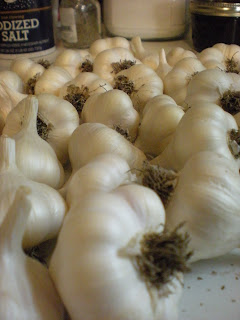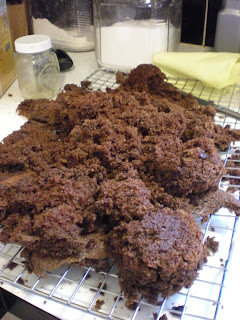
By the 1930s canned goods were so readily available that they were regularly showing up as ingredients in cookbooks. With the emphasis on Victory Gardens and canned goods requiring lots of blue/green ration points there was a whole lotta canning going on during WWII.
At the start of the War 64% of American women canned. In 1943, the peak civilian canning year in the U.S., 75% of American women canned. Of that 11% increase, 8% said they had never canned before the war. While that statistic seems small, it actually represents thousands of women who had to learn the art and science of canning.
Community canning centers were created in larger urban areas and the Office of Civilian Defense and other civic organizations held canning demonstrations and classes to teach those inexperienced women how to properly can produce to maximum nutrition while preventing spoilage. It worked. During WWII the average canning woman had 165 jars of self-preserved food in their larder, half of it representing produce grown by the family.
The following delicious excerpt from an article in the April 22, 1943 Topeka Daily Capitol reports details from one so-called "Canning School."
CANNING SCHOOL A SERIOUS AFFAIR
Bridge Table Chatter Lacking
There was a noticeable lack of light chatter and the bridge table attitude among attendants at the United Victory Canning School in the Municipal Auditorium Wednesday afternoon. Heretofore, an occasion for much sociability and gossip, the school in wartime was transformed into a serious study time.
The women who attended know well the importance of the food crisis which they as housewives must face for the duration. And they were there to learn - to learn food conservation, wartime recipes, how to prepare edibles with the least amount of waste, and the methods of canning whereby they might be sure jar after jar of vegetables and meats would not spoil before used.
Took Notes
Women leaned forward in their chairs to hear the tips and instructions auburn-haired Miss Zella Hal Weyant told them over a public address system.Many carried small paper pads and took notes on her lecture. With deft movements, Miss Weyant, home economist for the Kerr Glass Manufacturing Company, canned fruits, vegetables, meats and poultry in a pressure cooker.
In addition to the cooker method Miss Weyant explained the older method of cold packing now usually termed the hot water bath type of canning. All phases of canning were brought out and will be repeated in today's canning session.
Not a Style Show
Contrary to usual belief so near Easter Sunday, the meeting was not a veritable style show. True, there were well-dressed matrons in attendance - as well as housewives with victory shopping bags over their arms. The conversation during intermission however, ran to Victory gardens and defense on the home front rather than spring hats.
Present was a crowd of approximately 1,100, including not only wives and mothers, but 4-H clubs, businesswomen, junior high school students, and members of Washburn [University] and high school home economics classes. One instructor brought with her a group of ninety-five young homemakers. The crowd was dotted throughout with men and boys.
...Homer Cunningham, genial WIBW radio announcer, was mater of ceremonies during the distribution of the gifts. Fifteen baskets of [donated] foodstuffs, glass fruit jars, canned milk, plants, cereals, salt bread macaroni, floor wax and cloths, yeast, syrup and a set of glasses and pitcher were amount the practical articles given away.
Under the auspices of the Office of Civilian Defense and American Red Cross nutrition executive committee, the school will continue promptly at 1:30 o'clock today in the arena of the auditorium, doors of which will be open at noon.
Miss Weyent is assisted by Miss Elizabeth Lillibridge, home economist of the Gas Service Company.
 I love this article for so many reasons. I love how its emphasis on housewives and matrons marginalizes working women. After all, the canning schools mentioned in the article were being held during the work week. The truth is is that many women could not afford either the time or money to can up their own produce. New canning supplies were hard to come by during the War and community canning centers were underutilized.
I love this article for so many reasons. I love how its emphasis on housewives and matrons marginalizes working women. After all, the canning schools mentioned in the article were being held during the work week. The truth is is that many women could not afford either the time or money to can up their own produce. New canning supplies were hard to come by during the War and community canning centers were underutilized.
I also love the somewhat salacious writing: "Women leaned forward in their chairs to hear the tips and instructions of auburn-haired Miss Zella Hale Weyent told them over a public address system." And the serious tone of the conversation on Victory Gardening and NOT spring hats! Intrigue! It almost sounds like a dime-store mystery novel...
"Well, shucks," mumbled the town's one and only police officer, Lieutenant Jones. "Miss Zella," he confided in his raspy drawl, "We need your help. The town pharmacist, Mr. King, has just been found belly up at the soda fountain. It looks like foul play and you're the best detective this town has, for better or for worse. Can you help us?"
Miss Zella paused for a moment, thinking about the peaches she planned to preserve that afternoon. The peaches would have to wait, even if it meant the preserves would be less than perfect. Some things are less than perfect, the auburn-haired Miss Zella told herself - including murder. And with that thought she placed her spring hat on her head with a defined precision and headed towards Sweet Sips, the town soda fountain on Main Street...
Sorry about that, I got carried away.
Anyhoo...here at Rational Living canning is, of course, serious business. We first tackled water bath canning about 12 years ago, and this year there will be plenty of goodies from that method: pickles, jams, beets, and salsa.
But, just like homefront do-gooders we're expanding into pressure canning, thanks to a very generous donation of a pressure canner from a Rational Living friend and reader. Using a pressure canner allows one to preserve non-acidic/non-sugared/non-pickled items, like green beans, meats, and soups. I'm definitely going to get TMOTH's help on this one, since I have a sincere phobia of unintentionally making something explode (chemistry lab was never any fun for me). I think our first try will be with green beans.
So what are your canning plans? Have you ever canned before?
--Rational Mama






















